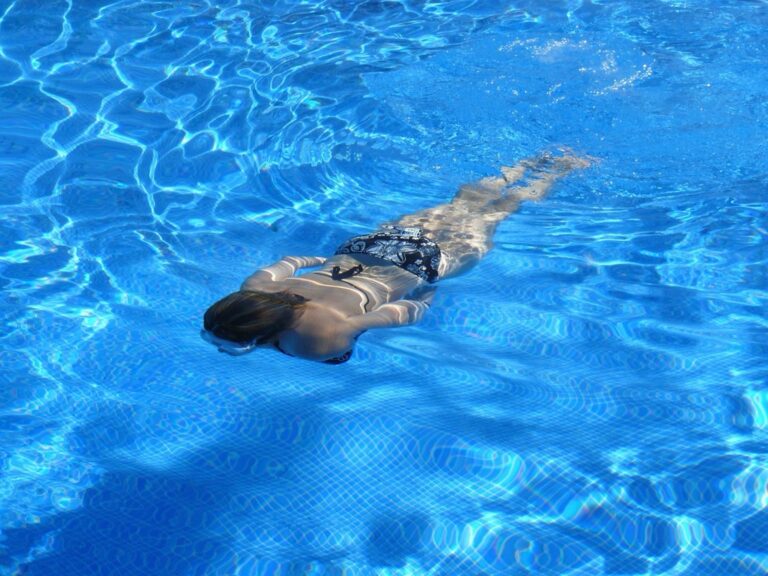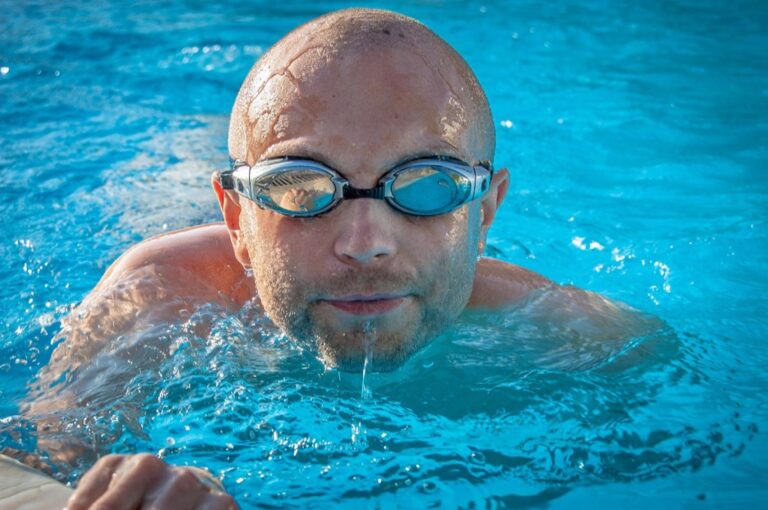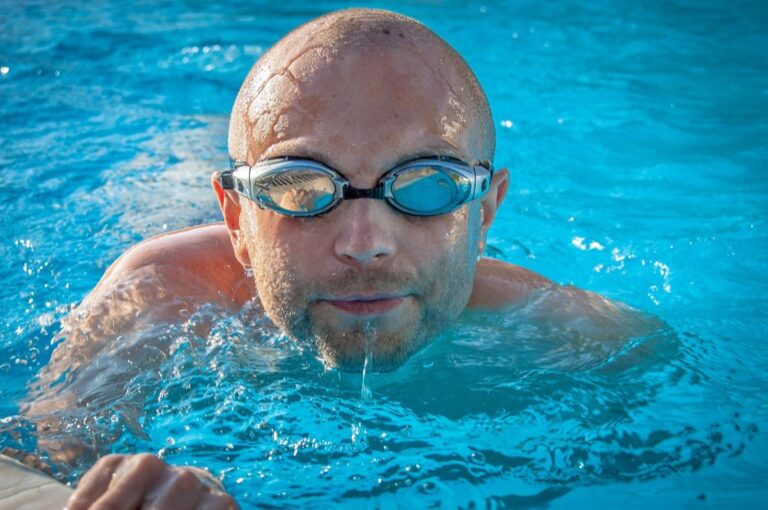7 How to Create a Pool Maintenance Checklist Steps That Save Thousands
Master pool care with our 7-step maintenance checklist guide. Learn daily, weekly & seasonal tasks to keep water crystal clear while saving time and money.
Why it matters: Pool maintenance can quickly become overwhelming without a systematic approach – missed steps lead to costly repairs and unsafe swimming conditions.
The big picture: A well-structured maintenance checklist transforms your pool care routine from guesswork into a streamlined process that protects your investment and keeps your water crystal clear.
What’s next: We’ll walk you through seven essential steps to create a comprehensive pool maintenance checklist that’ll save you time money and headaches all season long.
Disclosure: As an Amazon Associate, this site earns from qualifying purchases. Thank you!
Assess Your Pool’s Specific Maintenance Needs
Every pool has unique requirements based on its construction, location, and usage patterns. Your maintenance checklist must reflect these specific factors to be truly effective.
Pool type determines your baseline maintenance approach. Saltwater pools need different chemical balancing than traditional chlorine systems. In-ground concrete pools require more frequent brushing than fiberglass surfaces. Above-ground pools face different structural stresses that affect your inspection routine.
Environmental factors shape your maintenance frequency. Trees overhead mean more debris removal and potential algae growth from organic matter. Windy locations require extra skimming. High-use pools need more frequent chemical testing and equipment checks.
Usage patterns directly impact maintenance intensity. Family pools with frequent swimmers need daily chemical monitoring during peak season. Occasional-use pools can follow a more relaxed schedule but require thorough startup procedures.
Consider these specific factors when building your checklist:
• Bather load: More swimmers mean more contaminants and chemical demand
• Surrounding landscape: Vegetation affects debris levels and cleaning frequency
• Climate conditions: Temperature swings and rainfall patterns influence chemical balance
• Equipment age: Older systems need more frequent inspection and maintenance
Your pool’s specific needs will evolve seasonally and as equipment ages. Regular assessment ensures your maintenance checklist stays relevant and effective.
Create Daily Pool Maintenance Tasks
Daily maintenance tasks form the foundation of your pool care routine and take just 10-15 minutes when done consistently. These quick checks prevent small issues from becoming expensive problems while ensuring your pool stays swim-ready throughout the season.
Check Water Level and Skimmer Baskets
Your water level should sit halfway up your skimmer opening for optimal circulation. Low water levels strain your pump and can cause expensive equipment damage within hours.
Check skimmer baskets every morning and empty them when they’re one-third full. Clogged baskets reduce water flow by up to 50% and force your system to work harder than necessary.
Remove Surface Debris and Empty Skimmer
Surface skimming takes two minutes but saves hours of deep cleaning later. Use your telescopic pole and leaf net to remove floating leaves, insects, and debris before they sink to the bottom.
Reach high places easily with this durable, rust-resistant aluminum extension pole. It extends from 4.5 to 18 feet and features a secure flip-lock design and comfortable non-slip grip for various household tasks.
Empty your skimmer basket even if it looks half-empty. Yesterday’s debris continues decomposing overnight and releases organic compounds that feed algae growth and cloud your water.
Test and Balance Water Chemistry
Test your chlorine and pH levels every morning using test strips or a digital tester. Your chlorine should read 1.0-3.0 ppm and pH between 7.2-7.6 for safe swimming conditions.
Add chemicals in small doses throughout the day rather than large amounts at once. This approach maintains stable water chemistry and prevents the dramatic swings that stress your pool equipment and irritate swimmers’ skin.
Establish Weekly Pool Cleaning Procedures
Weekly deep cleaning goes beyond your daily routine to tackle the buildup that accumulates over time. These procedures keep your pool sparkling and prevent small issues from becoming expensive problems.
Vacuum Pool Floor and Walls
Vacuum your pool floor systematically using overlapping strokes to ensure complete coverage. Start at the shallow end and work toward the deep end, moving slowly to avoid stirring up debris. Pay extra attention to corners, steps, and areas around pool equipment where algae and debris typically accumulate.
Brush Pool Surfaces Thoroughly
Brush all pool surfaces weekly to prevent algae growth and remove stubborn contaminants. Use a stiff-bristled brush for concrete pools and a softer brush for vinyl or fiberglass surfaces. Focus on waterline areas, steps, and behind ladders where circulation is limited and algae love to establish colonies.
Clean Pool Filter System
Clean your pool filter weekly to maintain optimal water circulation and filtration efficiency. Cartridge filters need rinsing with a garden hose, while sand filters require backwashing until the sight glass runs clear. DE filters need both backwashing and fresh diatomaceous earth replacement to restore proper filtration capacity.
Schedule Monthly Deep Maintenance Activities
Monthly maintenance tasks address the deeper cleaning and system checks that weekly routines can’t handle. These comprehensive activities ensure your pool equipment operates efficiently and prevent costly breakdowns during peak swimming season.
Inspect and Clean Pool Equipment
Remove and thoroughly clean your pump basket, checking for cracks or wear that could allow debris through. Inspect pump seals, motor housing, and electrical connections for signs of corrosion or damage. Clean the pool heater‘s heat exchanger and check gas connections or electrical elements depending on your system type.
Test and Calibrate Pool Systems
Verify your automatic pool cleaner‘s suction power and clean its internal components to maintain optimal performance. Test salt chlorine generators by cleaning the cell plates and checking salt levels against manufacturer specifications. Calibrate your automated chemical feeders and replace worn O-rings or gaskets.
Perform Comprehensive Water Testing
Conduct complete water analysis including total alkalinity, calcium hardness, cyanuric acid, and phosphate levels using professional test strips or digital meters. Compare results against ideal ranges and adjust chemicals gradually over several days rather than making dramatic changes. Document your readings to track trends and identify potential equipment issues before they become expensive problems.
Plan Seasonal Pool Care Requirements
Your pool’s maintenance needs shift dramatically with the seasons, and planning these transitions prevents equipment damage and extends your swimming season. Each seasonal change requires specific procedures that protect your investment year-round.
Winterization and Opening Procedures
Winterization involves draining water below skimmer level, blowing out plumbing lines, and adding winterizing chemicals to prevent algae growth during closure. You’ll need to remove and store removable equipment like ladders, diving boards, and pool accessories in a dry location.
Spring opening reverses this process by refilling the pool, reconnecting equipment, and shocking the water with higher chlorine levels to eliminate winter buildup.
Equipment Inspection and Replacement
Seasonal transitions offer perfect opportunities to inspect pumps, filters, and heaters for wear, cracks, or reduced efficiency that develops over months of operation. You should replace worn gaskets, O-rings, and filter cartridges before they fail during peak season.
Check pool covers for tears, clean and store winter covers properly, and test automated systems like timers and chemical feeders for accurate operation.
Deep Cleaning and Renovation Tasks
Spring cleaning requires acid washing stained surfaces, deep cleaning tile lines with specialized brushes, and removing mineral deposits that accumulate during winter months. You’ll want to inspect and repair caulking around pool fixtures, steps, and lights.
Fall preparation includes thorough brushing of all surfaces, cleaning pool lights, and addressing any structural repairs before winter weather can worsen existing damage.
Organize Your Pool Maintenance Schedule
Once you’ve identified all your maintenance tasks, you need a system that keeps you consistent throughout the swimming season.
Create a Physical or Digital Checklist
Choose a format that you’ll actually use consistently. A laminated checklist by your pool equipment works great for visual reminders, while smartphone apps let you update tasks on the go. Digital options like Evernote or simple spreadsheets sync across devices and store historical data automatically.
Set Reminders and Maintenance Alerts
Schedule automated reminders for each maintenance frequency tier. Set daily phone alerts for skimming and chemical testing, weekly notifications for vacuuming sessions, and monthly calendar events for equipment inspections. Your pool’s specific needs determine the exact timing – high-use pools need more frequent chemical alerts.
Track Completion and Results
Document what you did and what you found during each maintenance session. Record chemical readings, equipment issues, and cleaning results to spot patterns over time. This tracking reveals when your pool needs extra attention and helps you adjust your schedule before problems escalate into expensive repairs.
Monitor and Adjust Your Pool Care Routine
Your pool maintenance checklist isn’t a static document – it’s a living tool that evolves with your pool’s changing needs. Regular monitoring and smart adjustments keep your maintenance routine efficient and effective year-round.
Review Checklist Effectiveness Regularly
Evaluate your checklist’s performance every 4-6 weeks to identify gaps or unnecessary tasks. Track which maintenance items consistently prevent problems versus those that seem redundant.
Document water quality trends and equipment issues to spot patterns that indicate your checklist needs refinement. If you’re constantly battling algae despite following your routine, it’s time to add more frequent brushing or adjust chemical testing frequency.
Update Tasks Based on Pool Performance
Modify task frequency when your pool’s behavior changes from season to season or after heavy usage periods. Pools that stay consistently clear might need less frequent vacuuming, while those with persistent cloudiness require more aggressive filtration schedules.
Add new maintenance items when you install equipment like UV sanitizers or salt systems. Remove outdated tasks when you upgrade from manual to automatic pool cleaners or switch chemical systems.
Adapt Schedule for Seasonal Changes
Shift your maintenance intensity with the seasons – summer pools need daily attention while fall pools might only require every-other-day checks. Spring openings demand intensive weekly deep cleaning that you can scale back once water stabilizes.
Winter maintenance in warmer climates focuses on reduced circulation and chemical adjustments, while closed pools need monthly equipment checks and cover maintenance. Your summer algae-fighting routine becomes unnecessary when water temperatures drop below 60°F.
Conclusion
Creating a comprehensive pool maintenance checklist transforms overwhelming pool care into manageable daily weekly and monthly routines. Your systematic approach ensures consistent water quality while protecting your investment from costly repairs and equipment failures.
Remember that your checklist isn’t set in stone—it’s a living document that evolves with your pool’s needs. Regular adjustments based on seasonal changes usage patterns and equipment performance keep your maintenance routine efficient and effective.
With your personalized checklist in hand you’ll spend less time worrying about pool problems and more time enjoying crystal-clear water. Start implementing these seven steps today and watch as your pool maintenance becomes second nature.
Frequently Asked Questions
What are the most essential daily pool maintenance tasks?
Daily pool maintenance includes checking water levels (keeping them halfway up the skimmer opening), emptying skimmer baskets, removing surface debris with a net, and testing chlorine and pH levels. These tasks take only 10-15 minutes but are crucial for maintaining water clarity and safe swimming conditions. Adding chemicals in small doses throughout the day helps maintain stable water chemistry.
How often should I perform deep cleaning tasks on my pool?
Weekly deep cleaning should include vacuuming the pool floor and walls, brushing all surfaces to prevent algae growth, and cleaning the filter system. Monthly deep maintenance involves inspecting pool equipment, testing and calibrating systems, and performing comprehensive water analysis. These scheduled cleanings prevent small issues from becoming costly problems.
What factors affect how often I need to maintain my pool?
Pool maintenance frequency depends on several factors: pool type (saltwater vs. chlorine), environmental conditions (nearby trees, wind exposure), usage patterns (high-use pools need more frequent monitoring), bather load, surrounding landscape, climate conditions, and equipment age. Pools with heavy usage or challenging environmental conditions require more frequent maintenance.
How should I organize my pool maintenance schedule?
Create a physical or digital checklist that works for your lifestyle – either a laminated list by the pool or a smartphone app. Set automated reminders tailored to your pool’s specific needs. Track completion and results of maintenance tasks, document chemical readings, and note equipment issues to identify patterns and prevent problems.
What seasonal maintenance tasks are most important?
Winterization includes draining water below skimmer level and adding winterizing chemicals. Spring opening involves refilling the pool and shocking the water. Use seasonal transitions to inspect and replace worn equipment like pumps and filters. Perform deep cleaning and structural repairs during spring and fall to maintain overall pool condition.
How do I know if my maintenance routine is working effectively?
Evaluate your checklist’s effectiveness every 4-6 weeks by monitoring water quality trends and equipment performance. Look for patterns in chemical readings and equipment issues. If you’re consistently dealing with the same problems or your water quality is declining, adjust task frequency or add new maintenance steps to address specific needs.
What’s the biggest mistake pool owners make with maintenance?
The biggest mistake is inconsistency or skipping routine maintenance steps. Neglecting regular maintenance can result in expensive repairs and unsafe swimming conditions. A systematic approach using a well-organized checklist ensures nothing is overlooked and helps maintain clear water while protecting your pool investment throughout the swimming season.








